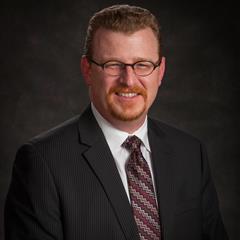Everyone wants vaccination rollout to be going faster, but we are making great progress here in Dane County, Wisconsin. We have more people vaccinated against COVID-19 than we’ve had people who have tested positive. It took us about a year for about 38,000 Dane County residents to test positive for COVID-19. In just over six weeks of having vaccine available, 56,798 Dane County residents have been immunized with at least one dose of vaccine. That is just over 10% of our population. Nearly 29% of Dane County residents 65 years old and older have at least one dose of the vaccine.
Vaccine supply is still very limited here and, therefore, some groups have been prioritized over others. At this writing, the groups eligible for the vaccine in Wisconsin are: frontline healthcare workers and long-term care facility, fire and police personnel, EMS staff, and people who are 65 years old or older We anticipate the following groups will become eligible for the vaccine in March: educators and child care workers, individuals enrolled in Medicaid long-term care programs, some public-facing essential workers (like food supply, public transit, utility and communications infrastructure, and 911 operators), non-frontline health care essential personnel, congregate living facility staff and residents. We do not expect the vaccine to be available to the general public until late spring.
Dane County partners with the City of Madison to operate Public Health- Madison Dane County. PHMDC is continuously collecting information from employers and other organizations who employ staff who might soon be eligible for the vaccine. When it is time for a group to be vaccinated, PHMDC will contact these organizations with instructions on how their individual staff member could register for a vaccination. Here is a link to a video on what folks who are getting a vaccine through Dane County should expect:
https://www.publichealthmdc.com/coronavirus/covid-19-vaccine
Until a much larger percent of the population is vaccinated, wearing a mask remains one of the most effective things that government employees can do to protect themselves and their loved ones. Now is a good time to remind employees to be sure their masks are meeting all of CDC’s recommendations. A lot of people have been talking about wearing two masks, but the CDC has not made any official recommendation about that. Rather, the CDC recommends:
- Non-medical disposable masks
- Masks that fit properly (snugly around the nose and chin with no large gaps around the sides of the face)
- Masks made with breathable fabric (such as cotton)
- Masks made with tightly woven fabric (such as fabrics that do not let light pass through when held up to a light source)
- Masks with two or three layers
- Masks with inner filter pockets
The CDC does not recommend:
- Masks that do not fit properly (large gaps, too loose or too tight)
- Masks made from materials that are hard to breathe through (such as plastic or leather)
- Masks made from loosely woven fabric or are knitted, such as fabrics that let light through
- Masks with one layer
- Masks with exhalation valves or vents
- Wearing a scarf or ski mask as a mask
Here’s a visual that we shared with our employees:
https://publichealthmdc.com/images/cdc%20mask%20recommendations.PNG
*The views and opinions expressed in the Public Risk Management Association (PRIMA) blogs are those of each respective author. The views and opinions do not necessarily reflect the official policy or position of PRIMA.*

By: Dan Lowndes
Risk Manager, Dane County (WI)
Summary of Qualifications
Dan has been the risk manager for Dane County since 2008. Dan administers the county’s self-insured Workers’ Compensation program and is the president of the county’s liability insurer, the Wisconsin Municipal Mutual Insurance Company (“WMMIC”) and is a past president of the Wisconsin Chapter of PRiMA. Before transitioning to Dane County, Dan served as in-house counsel for a non-profit organization dedicated to serving people with physical disabilities and mental health issues. Dan earned his BA from Marquette University and his JD from DePaul University.



